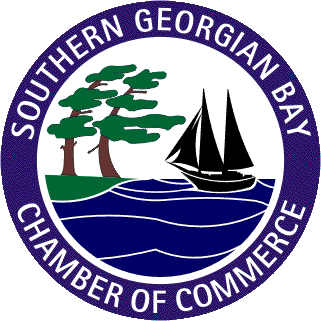5 steps to prevent safety-related downtime from eating into your profits
Despite best efforts small businesses do see injuries at their workplace.Southern Georgian Bay Chamber of Commerce is pleased to bring you tips on how to protect the value of your business.
Industry estimates suggest that 5% of production capacity is lost each year to unplanned downtime. “This figure is conservative,” says WSPS consultant Gord Leffley. While safety-related stoppages are just one type of unplanned event, even minor incidents can slow down or halt production.
“Take the example of a first aid case, traditionally considered a ‘no cost’ injury,” says Leffley. “When a person sustains an injury, how long does the person spend talking to other workers before seeking first aid treatment? How much time is spent finding the supervisor to report the injury, contacting a first aider, completing first aid and associated administration, cleaning up, and returning the first aider to their duties? How long is the injured person away from work getting, receiving and returning from first aid?”
Take all these considerations into account, says Leffley, and the productivity loss related to a single first aid occurrence could quickly amount to a half day. More serious injuries could cause slowdowns or shutdowns lasting days or weeks. Leffley knows this from personal experience. Early in his work life, he was re-assigned to a filling machine that had just amputated a worker’s thumb. “I had to clean the blood off before starting the machine up, so my focus was not exactly on productivity and quality.” The incident’s impact on productivity was immediate. One worker was down, and another had been pulled from his regular assignment to operate the machine. “We also dumped 200 cases of product looking for the thumb.”
Leffley’s example involves productivity and product losses. If an incident includes equipment loss, costs could skyrocket.
Here’s a sampling of related losses:
maintenance/repair of damaged equipment or machinery
faster depreciation of the damaged equipment or machinery
removal/disposal of the damaged or redundant equipment/machinery
equipment/machinery rental
purchase and installation of new equipment or machinery, and other workplace modifications.
Health and safety can protect the value of your businessWSPS consultant Martin Berthelot recounts two safety-related value scenarios he’s encountered. The first involves a business owner he worked with before joining WSPS. The owner was refusing to pay Workplace Safety and Insurance Board (WSIB) fines or paying the bare minimum. “When he eventually put his business up for sale, the buyer learned of these WSIB obligations. As a result, the seller had to reduce his price by $1 million.” Lesson learned: “If you don’t do the right thing now, you’ll have to do it later, and often at greater cost.”
The second scenario: suppliers who miss out on contracts because of poor health and safety performance. “Purchasers are increasingly asking for information on their suppliers’ health and safety programs and performance,” says Berthelot. “If you don’t have an effective program in place, you’re at a significant competitive disadvantage. And the smaller your business, the more severe the consequences could be.”
5 Steps To Protect Your Workers and Your Business
Martin Berthelot and Gord Leffley offer these five suggestions.
1. Know what potential hazards could be present in your workplace. Conduct an assessment and prioritize the results.
2. Formulate a business case. Include
o an action plan based on the hierarchy of hazard control: elimination, substitution, engineering, administration, and personal protective equipment. Involve workers and supervisors.
o the cost of doing nothing. An average lost-time injury claim in 2010 cost over $19,000. Associated costs could total up to 10 times that amount.
3. Apply firm timelines. “I’ve had conversations with employers who say, ‘I’ll deal with it when something happens,’” says Berthelot. “But that’s already too late, for the affected workers and for the business.”
4. Inform everyone of specific hazards and precautions to take.
5. Integrate loss management elements, processes, and disciplines throughout your operation via training, coaching, and proven techniques and tools.
WORKPLACE SAFETY & PREVENTION SERVICES- www.wsps.ca



